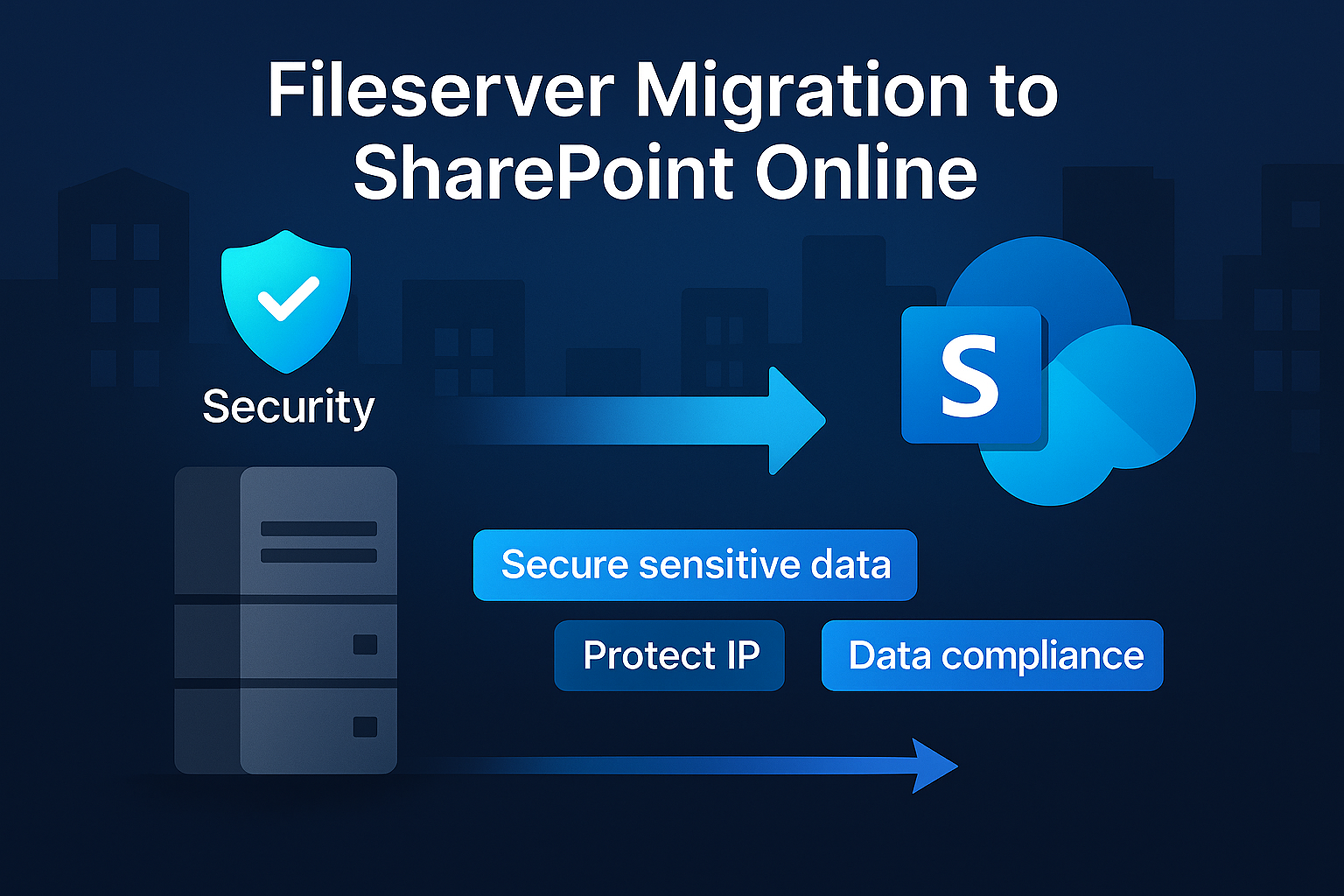Fileserver Migration to SharePoint Online
A leading Toronto-based private equity firm sought to migrate its on-premises file server data to the cloud to enhance data protection, security, and collaboration. The organization managed a significant volume of sensitive information, including proprietary financial models and intellectual property, necessitating a secure and well-structured migration approach. This project laid the foundation for the firm’s future-state document management system on SharePoint Online, with a strong focus on information architecture and governance.

Challenges:
- Designing a scalable information architecture and document management system to support 22 departments and over 500 employees.
- Navigating complex source-level ACLs, with hundreds of exclusive permission groups and nested access rules.
- Resolving broken inheritance, misconfigured permissions, and orphaned folders across the legacy file system.
- Addressing thousands of files with hard errors such as unsupported characters, excessive path lengths, and non-compliant naming.
- Meeting a compressed timeline, requiring rapid planning and execution for each department’s migration to SharePoint Online.
- Ensuring seamless coexistence and operational continuity throughout the migration and cutover phases.
- Implementing advanced data protection controls to meet stringent security and compliance requirements for sensitive content.
Solution:
To address the complexity of the migration, TechMeka deployed a specialized delivery team to plan, execute, and support the transition to SharePoint Online.
The following key actions were taken:
- Information Architecture Design: Collaborated with stakeholders across all 22 departments to define a future-proof, role-based document management structure aligned with business workflows and security requirements.
- Permissions and ACL Remediation: Conducted a comprehensive audit and normalization of existing ACLs, mapping them to SharePoint Online’s permission model. Broken inheritance, redundant groups, and orphaned folders were identified and remediated to ensure clean, secure access.
- Error Resolution & Pre-Migration Sanitization: Automated the detection and correction of non-compliant files with long paths, unsupported characters, or other issues using PowerShell scripts and migration readiness tools.
- Phased Migration Strategy: Developed and executed a rolling cutover plan by department, balancing speed with precision to meet aggressive timelines while minimizing disruption.
- Coexistence & Access Continuity: Enabled hybrid access and structured communication to ensure users had uninterrupted access to business-critical content during the migration window.
- Data Protection Controls: Implemented Microsoft 365 sensitivity labels, conditional access policies, and secure sharing configurations to enforce governance and compliance standards post-migration.
- Stakeholder Alignment: Maintained close coordination with department leads, IT teams, and compliance officers to validate progress, resolve issues, and ensure a smooth transition with minimal user friction.
Benefits:
- Modernized document management with scalable SharePoint architecture tailored to 22 departments.
- Enhanced data security and compliance through Microsoft 365 sensitivity labels and conditional access.
- Clean, role-based permissions replacing legacy ACL sprawl and broken inheritance.
- Improved content hygiene via automated remediation of file errors and naming violations.
- Minimal user disruption with phased cutovers and coexistence strategies for continuous access.
- Faster collaboration and searchability through structured information architecture.
- Reduced IT overhead by eliminating on-prem file server maintenance and manual permissions handling.
- Future-ready governance framework supporting secure sharing and lifecycle management.
- Tight stakeholder alignment ensuring business continuity and high user adoption.
